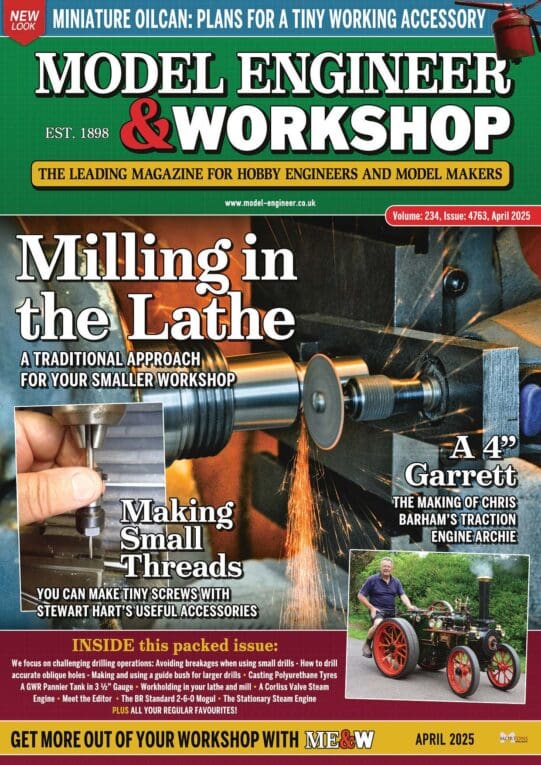The chuck I am dealing with is a 4inch Pratt Burnerd three-jaw, specially made for a Myford ML7 lathe. It is approximately 40 years old so you may find different arrangements on any later, updated versions, photo 1.
.jpg)
1. The 4” Burnerd Grip Tru chuck.
Enjoy more Model Engineer reading in the monthly magazine.
Click here to subscribe & save.
Under most circumstances, when cleaning is required, it is possible to just remove the jaws with the chuck key as usual and with a small screwdriver blade scrape out any swarf in the scroll whilst turning it with the chuck key and clean the jaw teeth and slides but don’t add oil or grease.
Complete dismantling should only be necessary occasionally. However, this does necessitate resetting the centralisation upon rebuilding.
The body is mounted with three socket head screws on a back plate which is a cast iron casting with three protrusions which are part of the centring adjustment. The body has the usual three jaw slides and scroll plate with the mitre gear teeth on the back driven by the chuck key gears.
.jpg)
2. Adjustment wedges removed.
There are also three tapered wedges (for want of another word) which screw into the body and mesh with machined grooves in the back plate protrusions. Photograph 2 shows these removed using the dedicated hexagon on the chuck key fixed cross bar. These must be removed prior to removing the back plate photo 3. Photograph 4 shows the small, machined groove that the taper meshes in.
.jpg)
3. Backplate removed.
.jpg)
4. Showing how the wedges mesh with the taper slots.
Photograph 5 shows the three jaw closing gears in mesh with the jaw scroll plate. Photograph 6 shows one of them removed after unscrewing the retaining screw from the Body which keeps them in place by fitting into the groove farthest from the teeth. The scroll can now be removed.
.jpg)
5. Chuck adjustment gears.
.jpg)
6. Gear removed after extraction of retaining screw.
Photograph 7 shows the scroll and chuck jaws removed. The jaws could have been removed before starting the dismantling.
.jpg)
7. Fully dismantled chuck.
Everything must be cleaned leaving no swarf, especially in the scroll grooves and the teeth on the jaws which mesh with it. Reassemble in reverse order with Molybdenum grease, sparingly on the running surfaces and a small blob on the scroll teeth. Do not put any on the jaw slides or the actual scroll, they will collect swarf.




